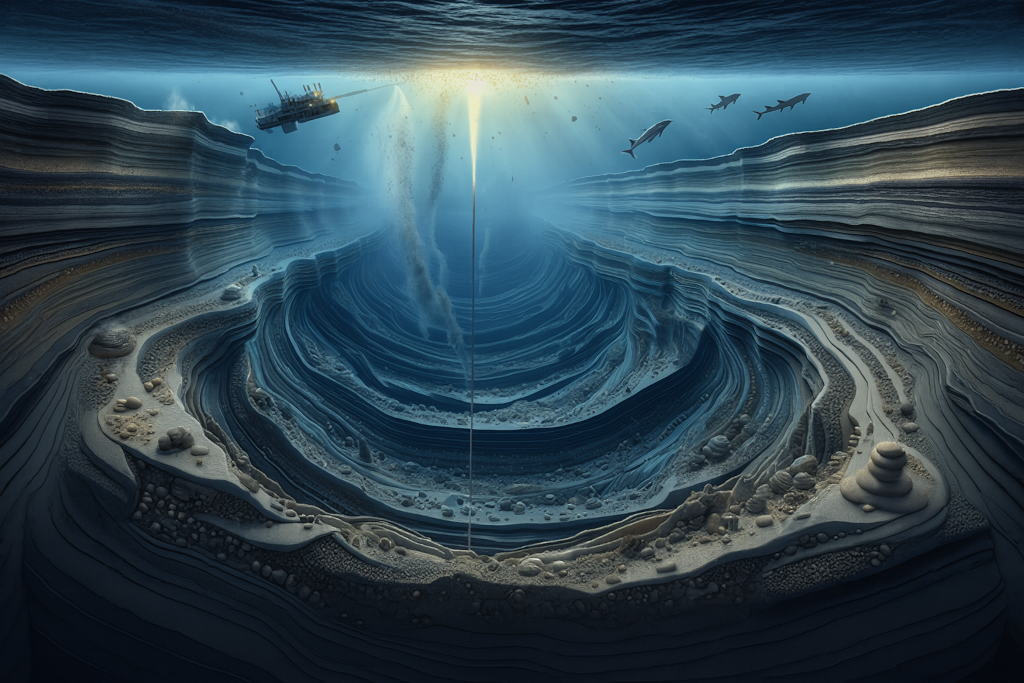Picture yourself diving into the Earth’s greatest unknown—7,000 meters deep, where light has never touched the seafloor, pressure could crush a submarine, and time passes at a pace set by millimeter-thin layers of mud. It sounds like science fiction—but it’s reality in the hadal trenches of our oceans.
For most people, the deep sea evokes images of strange bioluminescent creatures or long-lost shipwrecks. But what’s under all that? What forms the base—the literal foundation—of the deepest ocean zones? Here’s the overlooked truth: it’s not just mud. It’s a slow-dripping history book sealed by pressure, silence, and mystery.
The forgotten floors of the ocean—and why they matter
At depths below 6,000 meters—places like the Mariana Trench or the Tonga Trench—ocean sediments aren’t just dirt. They’re a delicate cocktail of ancient minerals, microscopic fossils, and dust that traveled across continents. These ultra-deep sediments tell quiet stories of our planet’s atmosphere, geology, and evolution.
But getting to them? That’s where things get fascinating.
In 2010, researchers from the Hadal Environmental Science Project sampled trench sediments in the western Pacific. What they found stunned even seasoned geologists: even at depths of nearly 11,000 meters, fine layers of sediment (just a few micrometers thick) had preserved plankton shells thousands of years old, amazingly well-formed. How? The answer lies in chemistry, not miracles.
What’s really down there: a gritty breakdown
Here’s what makes up the loose, slow-building sediment at the bottom of the Earth’s deepest oceans:
- Fine-grained clays and silts: These particles, often smaller than dust, sink extremely slowly, sometimes taking centuries to reach the deepest ocean floor.
- Eolian (wind-blown) dust: Carried from deserts like the Sahara or Gobi and eventually falling into the sea, touching worlds far from their origin.
- Biogenic material: The tiny skeletons of microorganisms, mainly silica-rich diatoms or radiolarians, make up siliceous ooze, a key player in ocean sediment.
- Volcanic ash: Fine particles from distant eruptions, tracing tectonic events from thousands of miles away.
The sediment texture? Think talcum powder. The median grain size is about 13.6 μm—so fine it slips between your fingers like smoke. These micro-particles settle in layers over millennia, forming a nearly untouched record of Earth and ocean life.
But wait—why so little carbonate?
You might expect to find traces of shells, coral fragments, or limestone-like material here. But below a certain depth—called the Calcite Compensation Depth (CCD)—those materials begin to dissolve. The pressure is intense. The temperatures are close to freezing. Water chemistry changes. Which is why you rarely find carbonate-based sediments down here.
Still, in rare spots, like protected pockets in the Mariana Trench, scientists occasionally discover tiny, well-preserved calcareous fossils. These are exceptions made possible by unique depositional conditions, like sudden burial or low biological activity that prevents dissolution.
When gravity shakes things up
Now and then, submarine landslides or turbidity currents sweep down from the trench slopes, carrying coarse material—sand, gravel, even rock fragments. These fast, violent events completely contrast with the calm, slow settling of clay from above. They’re like sudden exclamation marks in an otherwise quiet story.
So why should you care about hadal mud?
Because these deep sediments are more than just wet dust. They hold:
- Clues to ancient climate patterns encoded in eolian dust composition
- Records of past volcanic activity through ash particle fossils
- Evidence of how life survives—or doesn’t—where no light exists
In fact, the discovery of certain microfossils beneath the trench floor helped revise ocean circulation models from the last Ice Age. These aren’t just sediments—they’re planetary archives.
The bottom line: the deepest seafloor isn’t dead—it’s just waiting
We used to think the bottom of the ocean was barren. Lifeless. Unchanging. But science keeps proving otherwise. With every core sample pulled from the abyss, we reshape our understanding of Earth’s history and future.
So the next time someone tells you it’s “just mud down there,” remember: the deepest ocean isn’t empty—it’s full of secrets.
Now, here’s your challenge: Stay curious about what lies beneath the surface—whether it’s the seafloor or ideas we think we already understand. The next breakthrough? It could be buried in the mud… 11,000 meters deep.




Leave a Comment